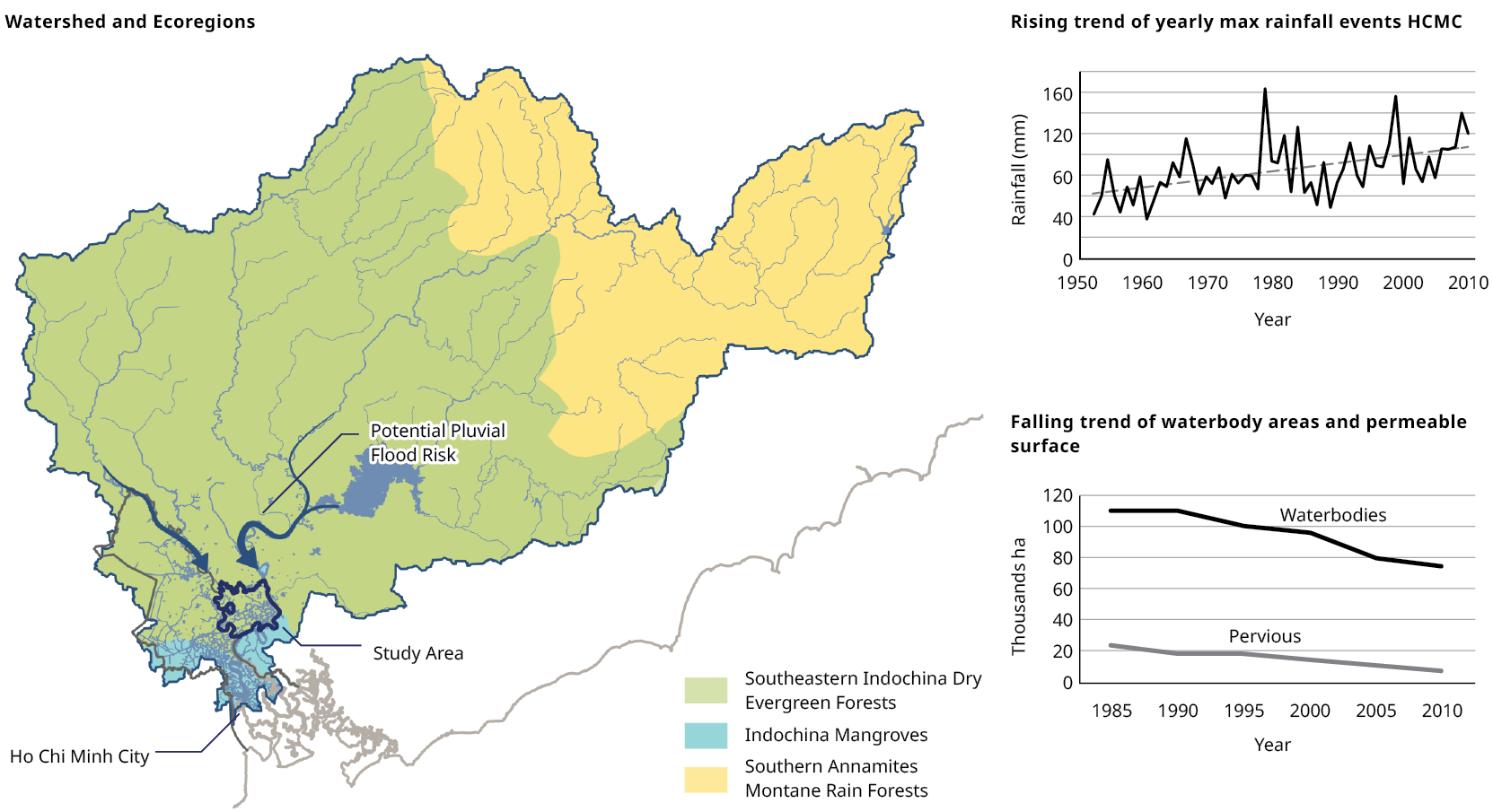Highly Interactive Innovation District in Ho Chi Minh City
Regional Development Framework
The "Interactive Innovation District" in Eastern Ho Chi Minh City aims to transform the region into a dynamic hub of high-tech industry, research, and sustainable urban development, blending cutting-edge innovation with resilient design to tackle climate challenges and foster a knowledge-based economy.
The project aims to develop an “Interactive Innovation District” in Eastern Ho Chi Minh City, encompassing Districts 2, 9, and Thu Duc, to drive the city’s transition to a knowledge-based economy within the context of the Fourth Industrial Revolution. The project capitalizes on the area’s strategic position, advanced educational infrastructure, and technological hubs, creating a nucleus for high-tech industry, research, and educational collaboration. Its goals include generating high-value jobs, enhancing economic resilience, and fostering sustainable urban development through state-of-the-art infrastructure and supportive policy frameworks. By establishing a high-density innovation ecosystem, the district aims to link research, development, production, and community spaces in close proximity to encourage collaboration and value creation. The district will also prioritize quality of life, environmental sustainability, and public transport, providing an attractive environment for professionals, researchers, and residents. The district’s ecological setting, characterized by rivers and wetlands, is vulnerable to flooding, underscoring the need for resilient design to address climate change impacts. Adaptation strategies will focus on sustainable water management, natural flood barriers, and green infrastructure to mitigate flood risks and preserve the area’s unique environment.
Climate Change and Resilience
Located outside Ho Chi Minh City’s flood infrastructure, the HIID boundary requires strategies to manage internal flooding as open spaces are developed. Key climate challenges—flash flooding, tidal flooding, urban heat, land subsidence, and saltwater intrusion—affect water quality, biodiversity, and resilience. To address these, robust standards, monitoring, and protection of green spaces are needed. Converting agricultural land to real estate reduces hydrological capacity and raises flood risk, highlighting the need to balance development with ecological resilience.
Tidal Flood Risk
Strategies for a Landscape Approach
To preserve HIID’s hydrological function, prevent pluvial flooding, and meet HCMC’s open space standards, planning must balance new development with ecological protection. Guidelines on open space typologies can support a diverse park system, while strategies should protect key ecological areas, improve blue-green networks, and integrate stormwater management from source to larger water bodies, including internal drainage and natural features. These strategies, grounded in ecosystem sensitivity and flood risk mapping, may be refined with further analysis to ensure resilient, sustainable development.
Rapid Landscape Classification








